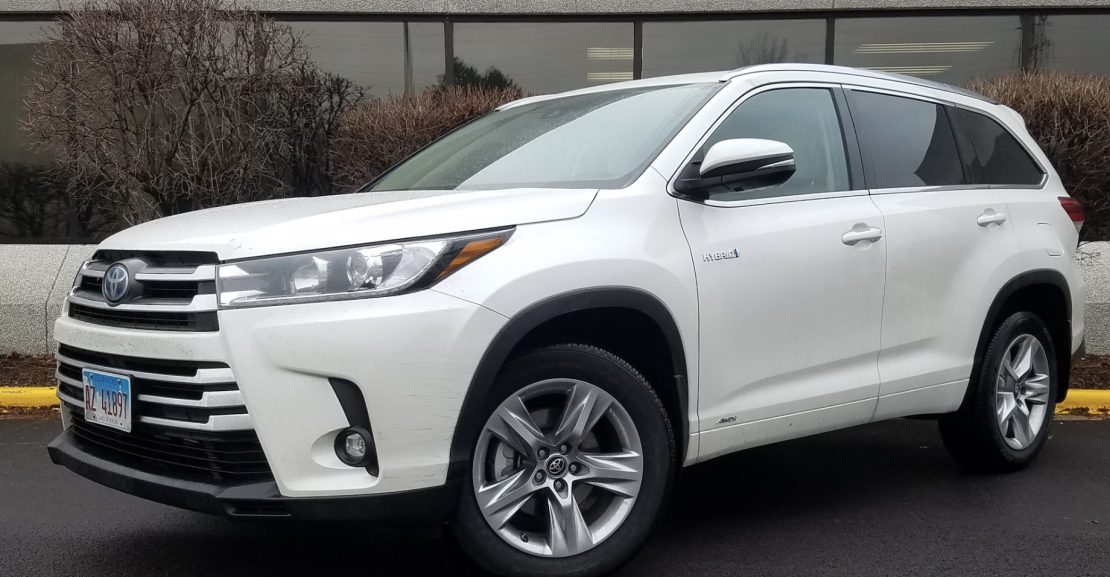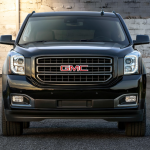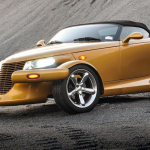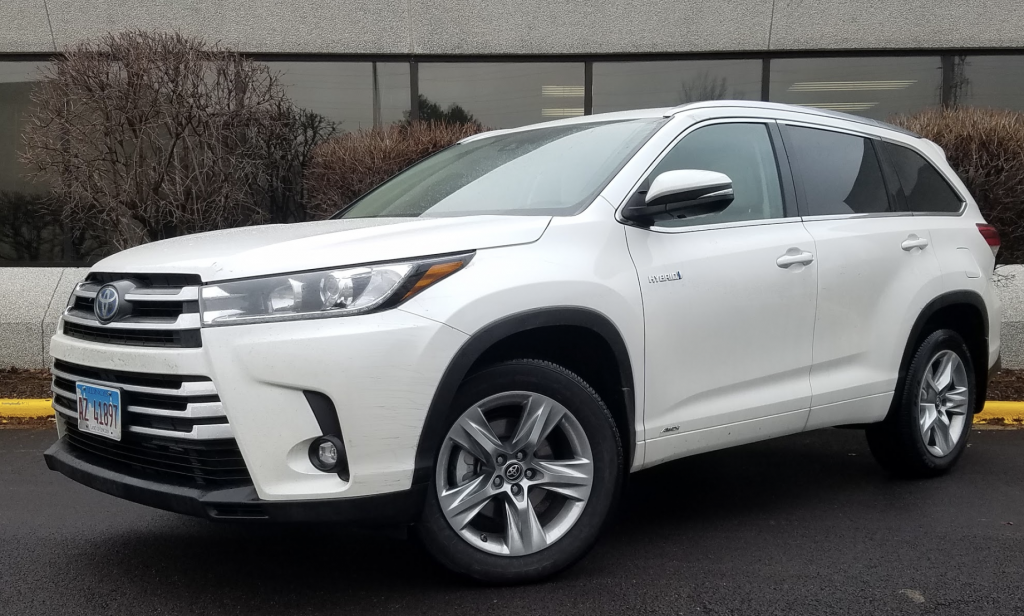
2019 Toyota Highlander Hybrid Limited 
Class: Midsize Crossover
Miles Driven: 628
Fuel Used: 26.9 gallons
Real-world fuel economy: 23.3 mpg
Driving mix: 30% city, 70% highway
| CG Report Card | |
|---|---|
| Room and Comfort | A |
| Power and Performance | B |
| Fit and Finish | A |
| Fuel Economy | B+ |
| Value | A |
| Report-card grades are derived from a consensus of test-driver evaluations. All grades are versus other vehicles in the same class. Value grade is for specific trim level evaluated, and may not reflect Consumer Guide's impressions of the entire model lineup. | |
| Big & Tall Comfort | |
| Big Guy | A |
| Tall Guy | A |
| Big & Tall comfort ratings are for front seats only. "Big" rating based on male tester weighing approximately 350 pounds, "Tall" rating based on 6'6"-tall male tester. | |
EPA-estimated fuel economy: 29/27/28 (city, highway, combined)
Fuel type: Regular gasoline
Base price: $45,510 (not including $1045 destination charge)
Options on test car: Special color ($395), carpeted floor and cargo mats ($264)
Price as tested: $47,214
Quick Hits
The great: Fuel economy, interior storage, standard and available features
The good: Driving dynamics, separate-opening back window
The not so good: Long reach to some audio controls
More Highlander price and availability information
CG Says:
In a class that contains 19 strong contenders, Toyota’s 3-row Highlander has long been a member of our Midsize Crossover Best Buy club. While it’s not been the only member, its inclusion in that group speaks volumes about its capabilities.
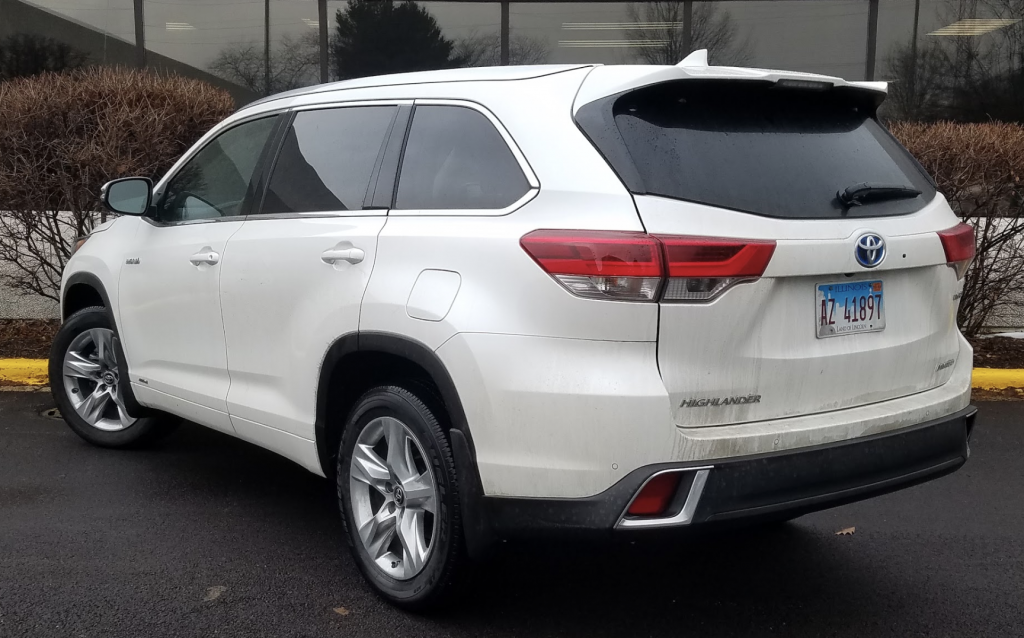
Almost surprisingly, the Highlander is the only vehicle in the class to offer a hybrid version, at least as of right now. (The 2020 Ford Explorer, which is slated to go on sale this summer, will also offer a hybrid model.) Mostly what the hybrid hardware brings is the expected benefit of better fuel economy, which in this case comes with few sacrifices save for a bit of added cost. How much added cost? Well, it depends upon the trim level chosen and whether you want the AWD that comes standard in all Highlander Hybrids.
Test Drive: 2019 Honda Passport Elite
Hybrids are offered in four trim levels, representing most of the six available in gas versions. While the base gas model – the $32,375 LE – comes with a 4-cylinder engine and front-wheel drive, moving up to the $35,885 AWD LE V6 gets you a V6 engine and all-wheel-drive. That’s the version on which the least-expensive Hybrid is based, which adds $2130 to the cost – more than the $1620 added by moving from the “gas” AWD Limited to the $46,555 Hybrid Limited represented in this test.
And what do you get for your $1620? Mostly an increase in fuel economy … along with any street cred generated by your “green” choice. Like many hybrids — and conversely to gas vehicles — the Highlander Hybrid’s EPA city rating is slightly higher than its highway rating; in this case, 29 mpg city/27 mpg highway, with a combined rating of 28 mpg. Since the gas version comes in at 20/26/22, the Hybrid should gain you about 9 mpg in city driving, 6 mpg in combined city/highway driving, and virtually nothing in highway driving. Although our test included about 70 percent highway driving — and thus didn’t really show off the Hybrid’s virtues — we still didn’t get close to the EPA estimates, as we averaged “only” 23.3 mpg. However, this was in cold weather, and a 2017 Highlander Hybrid tested averaged 28.1 mpg, whereas a gas version got 22.8 — figures that more closely reflect the EPA estimates.
Quick Spin: 2019 Mazda CX-9 Signature
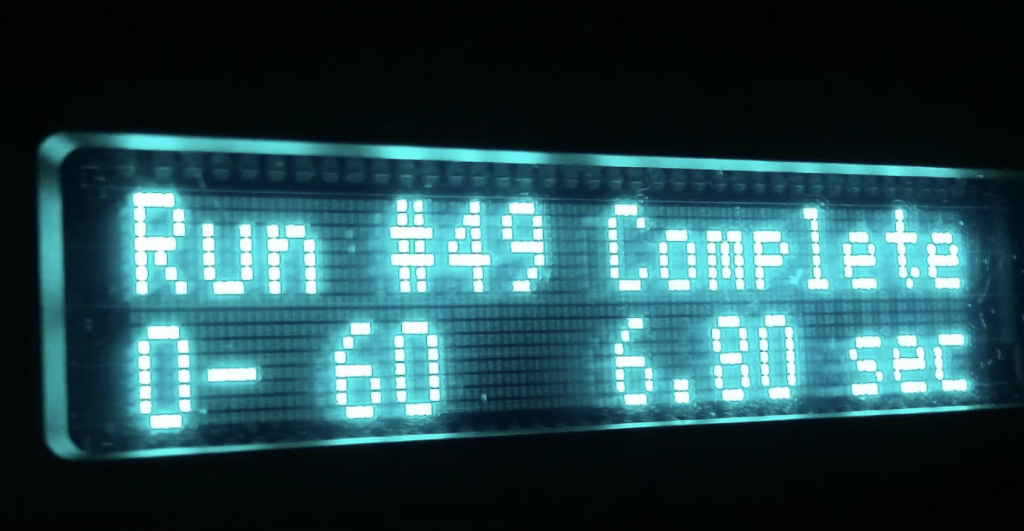
Another of the benefits of many current hybrids is that they’re often a bit quicker and more responsive than their gas counterparts thanks to the instant power created by their supplemental electric motors. While we don’t have figures for a gas Highlander to use as a comparison, we can say that our test Hybrid version averaged an impressive 6.8 seconds in the 0-60-mph dash, and provided quick response when the throttle was stabbed at speed. A relatively smooth, quiet ride is another asset.

Beyond that, the Highlander – in any form – makes points for passenger and cargo room. While most vehicles in this class manage both quite well, few can match the Highlander’s available 8-passenger seating capacity, and fewer still its convenient cabin storage space. Highlights of the latter include a large glovebox, wide mid-level dashboard tray with bottom “pass-through” to the central bin below (which hosts Aux, two USB, and 12-volt plugs), a left-side dash bin, and a huge console box with front and rear “roll-top” access doors covering a sliding tray and another 12-volt outlet. And nice touches in the spacious rear cargo area is an under-floor tray that will hold the roll-up cargo cover along with a separate flip-up rear window that eases loading of small items.
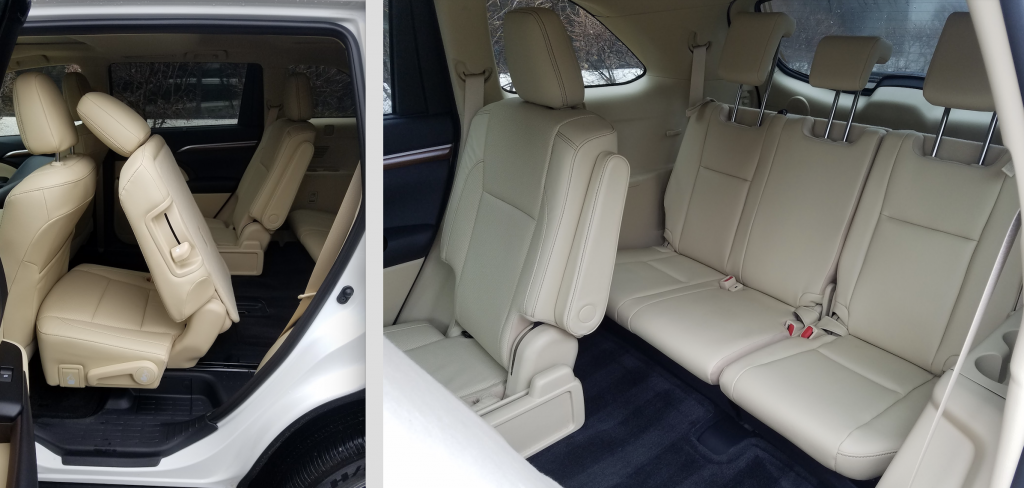
The only downside of the passenger-carrying sort is that the third-row seat is tight for adults, and the pass-through to get back there is equally tight. Aiding the task of fitting three in the second row is plenty of adult headroom and legroom (the seat can be slid fore and aft a few inches to balance legroom in the second and third rows), along with a nearly flat floor for good center-seat foot space. However, the floor raises quite a ways under the seat cushions to create a “knees-up” seating posture for anyone in the third row. Our tester was fitted with second-row bucket seats that trimmed seating capacity to seven, though that allows for a center flip-up console providing convenient cupholders and a storage tray.
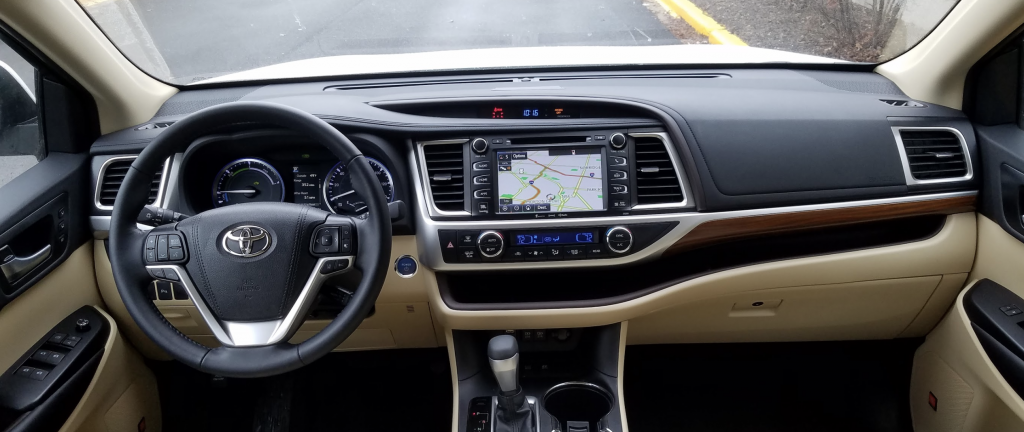
Also tough to beat was our tester’s two-tone interior boasting rich-looking wood trim and plenty of padded surfaces along with its great outward visibility.
Test Drive: 2017 Nissan Pathfinder Platinum
If there’s a fly in the interior ointment, it’s the audio controls. While they’re clear enough and include volume and tuning knobs along with a few physical buttons, the tuning knob and some of those buttons are a very long stretch away for the driver. Climate controls are easier to reach, but include repetitive-step fan and mode buttons that aren’t as convenient to use as the rotary knobs that adjust the dual temperature settings.
While any Highlander is a fine choice, we feel the Hybrid carries its added cost weight well, at least if you do mostly city driving. And that benefit is in addition to the nodding approval you’ll get from the folks in your local “go green” society.
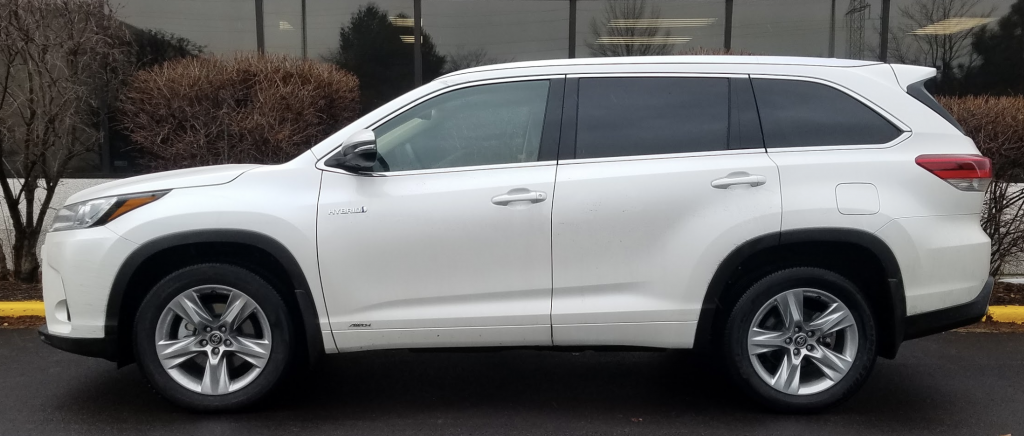
Check out our Midsize Crossover Best Buys

